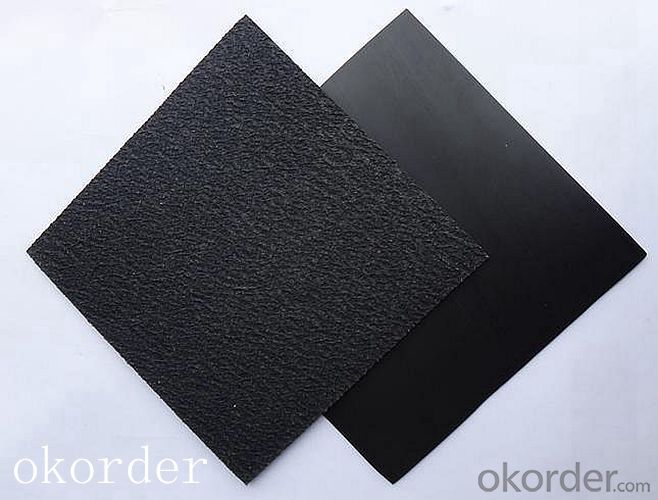- Understanding the Role of Geomembrane Liners in Waste Management
- Innovations in Geomembrane Liners for Water Management
- Geomembrane Liners: A Comprehensive Guide
- The Future of Geomembrane Liners in Civil Engineering
- Geomembrane Liners: Enhancing Landfill Stability
Manager:Alvin Wang
WhatsApp:+62 8983806051
Tel:+86 10-5797-1075
Email:steelwang@okorder.com
Address:3rd Floor, No.2 Building, No.1 Sanlihe Road
HDPE Geomembranes in the Marine Environment: Challenges and Solutions
hdpe Geomembranes are a popular choice for various applications, especially in marine environments, due to their durability, chemical resistance, and ability to prevent water seepage. However, these synthetic materials also face unique challenges when exposed to the harsh conditions of the sea. In this article, we'll explore the challenges HDPE geomembranes face in marine environments, as well as potential solutions to overcome these issues.

The Beauty and Beast of HDPE Geomembranes
Imagine the serene beauty of the ocean, its waves gently caressing the shore. Now picture an HDPE geomembrane, a synthetic yet essential component in many marine projects. While they bring numerous benefits, they also face the wrath of the sea. The marine environment is a double-edged sword, offering both opportunities and posing threats to the longevity and performance of HDPE geomembranes.
1. The Salt of the Sea: Corrosion Concerns
Saltwater, with its high salinity, is a natural corrosive agent. HDPE geomembranes, although resistant to many chemicals, are not immune to the relentless salt. Over time, the salt can cause stress corrosion cracking, leading to the weakening of the geomembrane and potential failure. This is a major concern for projects where integrity and durability are paramount.
2. The Pressure of Waves: Mechanical Stress
The relentless force of waves can exert significant mechanical stress on HDPE geomembranes. This constant pressure can lead to fatigue and eventual rupture if not properly addressed. The design and installation of these geomembranes must take into account the dynamic nature of the marine environment to ensure they can withstand these forces.
3. The Sun's Ultraviolet Rays: Degradation
While the sun provides life and warmth, its ultraviolet (UV) rays can be detrimental to HDPE geomembranes. Prolonged exposure to UV light can cause the material to degrade, losing its structural integrity. This is particularly concerning in marine environments where the geomembranes are exposed to sunlight for extended periods.
4. The Grip of Microorganisms: Biofouling
Marine environments are teeming with microorganisms. Some of these can attach themselves to the surface of HDPE geomembranes, forming a slimy layer known as biofouling. This not only affects the aesthetics but also the functionality of the geomembrane, potentially leading to clogging and reduced efficiency in water management systems.
Solutions to the HDPE Dilemma in Marine Environments
Despite these challenges, there are several strategies that can be employed to mitigate the impact of the marine environment on HDPE geomembranes.
1. Protective Coatings: A Shield Against the Elements
Applying protective coatings to the surface of HDPE geomembranes can provide an additional barrier against the corrosive effects of saltwater, UV rays, and biofouling. These coatings can be tailored to the specific needs of the project and the environment in which it is situated.
2. Reinforced Installation: Strength in Numbers
Using reinforced installation techniques can help to distribute the mechanical stress experienced by the geomembranes more evenly. This can involve the use of anchors, ballasts, or additional layers of material to provide support and prevent rupture.
3. Regular Maintenance: The Key to Longevity
Implementing a regular maintenance schedule can help to identify and address issues before they become critical. This includes cleaning the geomembranes to remove biofouling and inspecting them for signs of wear, corrosion, or damage.
4. Advanced Materials: The Future of Geomembranes
Research into advanced materials and manufacturing techniques is ongoing, with the aim of developing HDPE geomembranes that are more resistant to the challenges of the marine environment. This could involve the incorporation of additives to improve UV resistance or the development of new polymer blends that offer enhanced durability and resistance to corrosion.
The Future of HDPE Geomembranes in Marine Environments
While the challenges are significant, the solutions are within reach. By employing a combination of protective measures, reinforced installation techniques, regular maintenance, and investing in research for advanced materials, we can ensure that HDPE geomembranes continue to play a vital role in marine projects around the world. The key is to embrace the marine environment's complexity and adapt our strategies accordingly. With the right approach, HDPE geomembranes can be both a sustainable and reliable solution for the marine environment.
- Previous:HDPE Geomembranes: A Protective Solution for the Food Industry
- Next:The Role of HDPE Geomembranes in Flood Control Systems






